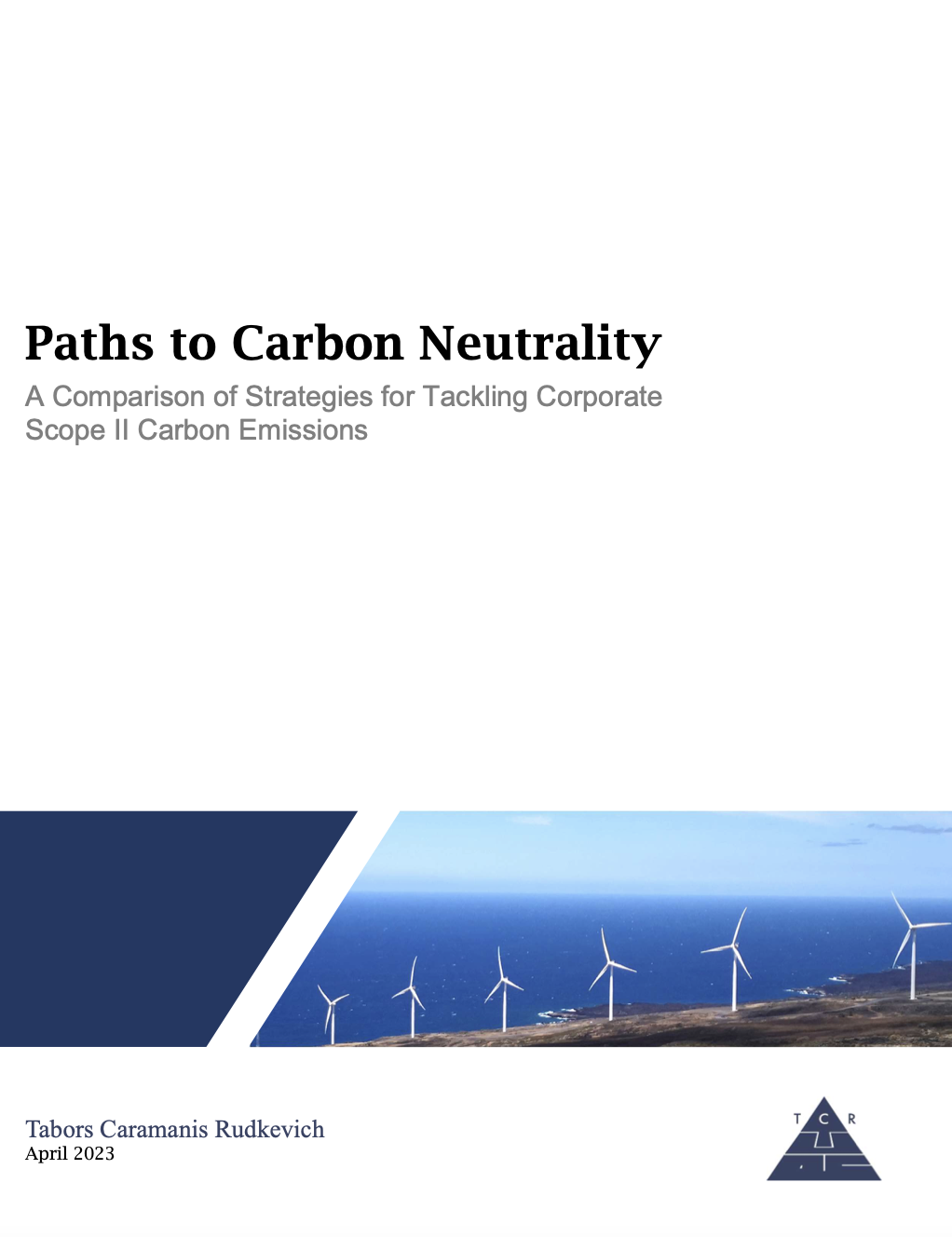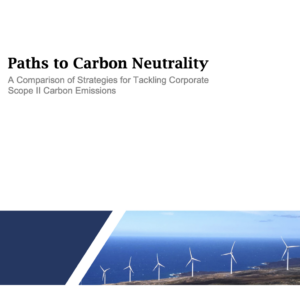
A Comparison of Strategies for Tackling Corporate Scope II Carbon Emissions, published by Tabors Caramanis Rudkevich
The purpose of this paper is to provide a comprehensive, comparative study covering a variety of factors impacting the cost and implementation of corporate clean energy procurement strategies.
Read the excerpt below to learn more.
Global climate change has pushed carbon emissions to the forefront of public scrutiny and scientific inquiry. Striving to reduce their net carbon footprint, large energy consumers have increasingly turned to renewable energy resources. These energy consumers have pioneered different approaches toward clean energy procurement, such as the RE100 initiative, Google’s 24/7 Carbon-Free Energy, Microsoft’s 100/100/0 vision, and the Emissions First partnership led by Meta and Amazon. This white paper examines different clean energy procurement strategies in terms of overall cost and effectiveness in carbon emissions reduction.
Using locational marginal emission rate (LMERs), we quantify the cost and carbon emissions impact of clean energy procurement strategies for corporate energy consumers with varying load shapes and within a variety of balancing authorities. We compare energy matching strategies against a strategy that directly accounts for carbon emissions, which we call carbon matching, for two different types of large electricity consumers in 5 different balancing authorities. Balancing authorities ranged from large ISO/RTOs (PJM and CAISO) to vertically integrated utility regions covering a regional (Duke Energy Carolinas) or municipal area (Los Angeles Department of Water and Power and Portland General Electric).
The results show the following:
- Carbon matching, a strategy that directly accounts for carbon emissions using LMERs and ensures that avoided emissions are equal or greater than emissions attributable to load, is more cost-effective than any of energy matching strategies analyzed;
- Energy matching does not guarantee reaching carbon neutrality;
- Localized energy matching decreases carbon displacement efficiency;
- Local energy matching may not be practical in certain regions, which could deter participation;
- Hourly energy matching is the least efficient strategy at displacing carbon emissions, and its cost varies greatly depending on location
If you’d like to learn more about REsurety’s Location Marginal Emissions (LMEs) offerings, please contact us.
Return to the blog post main menu.


